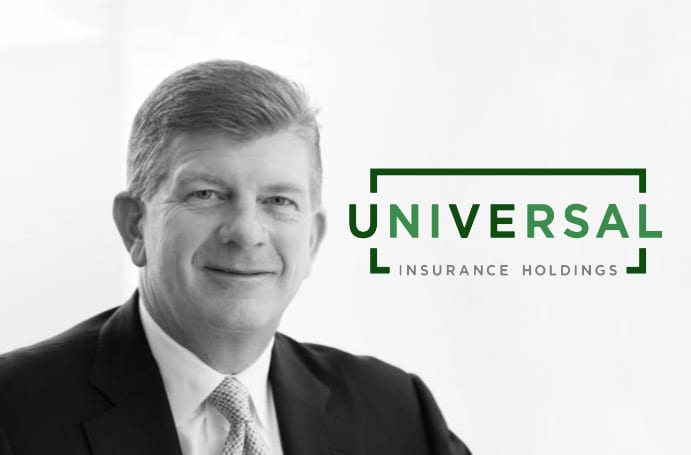Universal retains full Idalia loss, but confidence in Florida returning: CEO

During the last quarter of record, Universal Insurance Holdings, the Florida headquartered primary insurance carrier that has become a bellwether for signals of appetite for risk in the state and use of reinsurance by the state’s carrier cohort, began to grow its book again despite its reinsurance not responding to hurricane Idalia.
Recall that hurricane Idalia is seen as likely to drive insurance industry losses of above $2 billion, with one of the modelling firms having said it could be up to $5 billion.
At that level of industry loss, a few years back the major Florida specialist primary insurance carriers would almost all have tapped into their reinsurance for such an event, but after the restructuring of covers and raising of attachments a loss like Idalia becomes more of a retention than cession feature.
Case in point Universal, which has ceded significant amounts of catastrophe and weather risk to the reinsurance and capital markets over the last decade, but with Idalia has retained all of the loss.
Stephen J. Donaghy, Chief Executive Officer, explained, “During the quarter, Hurricane Idalia made Florida landfall, and, as always, we were there immediately to assist our policyholders in their time of need. The storm’s severity appears considerably smaller than initially anticipated and is comfortably absorbed within our retention.”
Another metric that has been watched with Universal and its peers, is the premium cession rate, which helps in understanding how they lean on their reinsurance capital support.
In the third-quarter of 2023, Universal’s ceded premium ratio fell to 30.2%, down from 35.8% in the prior year quarter.
The company said this, “primarily reflects efficiencies associated with the 2023-2024 reinsurance program and direct premiums earned growth associated with primary rate increases, partly offset by higher reinsurance pricing and higher reinsurance costs associated with an increase in home values.”
While fewer premiums (losses) are being ceded to reinsurance capital, the higher inwards rates on the premium side are offsetting to a degree and boost the ability of carriers to retain more of the attritional weather and catastrophe losses that have become such a feature of the Florida market.
Another area is ceding commissions, where those flowing back to primary carriers are decreasing after the restructuring of reinsurance towers, especially attachments.
It’s had to know exactly what effect this is having, but Universal reported that its commissions, policy fees and other revenue fell 10% in the quarter year-on-year, explaining, “The decrease primarily reflects the difference in pricing and structure associated with our reinsurance program when compared to the prior year and a decline in policy fees associated with lower policies in force.”
While performance has improved overall, year-on-year, Universal still reported a 110.7% combined ratio for Q3 2023, driving a small loss for Q3.
But, on the positive side, Universal has begun to expand in Florida again, with direct written premiums rising 6.3% across the business to $532 million, with 4.4% growth in Florida, a recovery of sorts, versus 14.7% growth in other states.
Florida remains the majority of Universal’s premiums and total insured values though, so resuming growth in the state is important to the insurer.
Florida TIV is still down on a year earlier, at almost $190.3 billion, but there is more confidence emerging in writing more business in the state that could see the total catching back up again, if that confidence continues.
CEO Donaghy said, “We continue to enhance our best-in-class claims infrastructure, which together with our reinsurance capabilities, serves to differentiate us from our peers.
“As we look forward, we are more confident in the Florida market, which is our largest geography, and have started to slowly increase new business in additional territories.”
Universal continues to return to premium growth in Florida, albeit more rate related than policy count, the emerging balance suggests a more sustainable level of inwards versus outwards premium, depending on future catastrophe loss activity.
Carriers, in all states, not just Florida, have to adjust their businesses to reflect the new reinsurance environment and the inward rate environment is enabling them some time to do so, to a degree at least.
It’s going to be interesting to watch how things play out over the next few years, as it begins to look possible a carrier like Universal could actually perform better through this new environment, than it had in the past when reinsurance had been abundant and cheap(er). Time and loss activity will tell though.
Read all of our news and analysis on the Florida insurance and reinsurance market.






